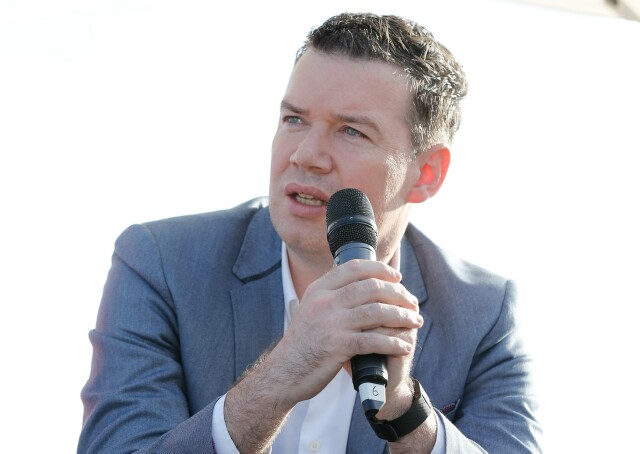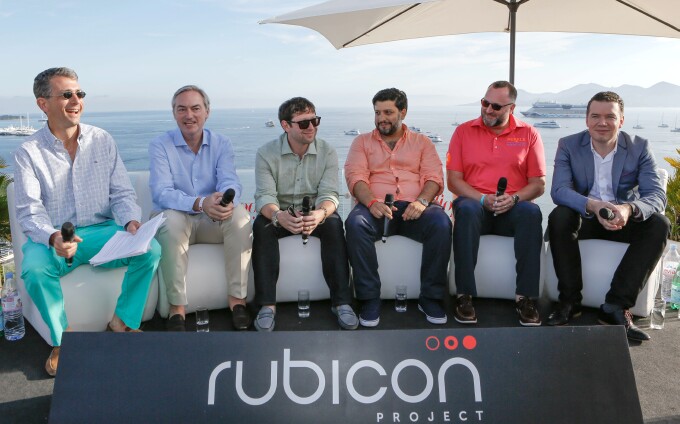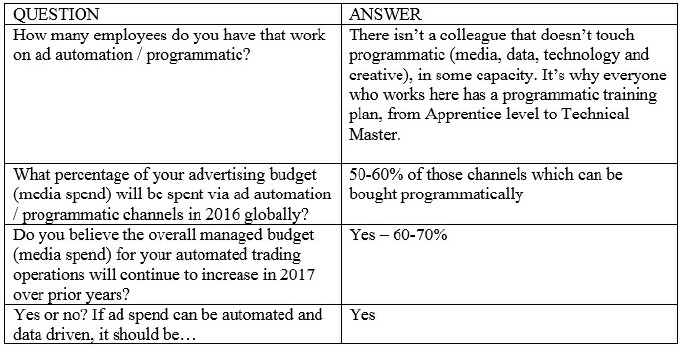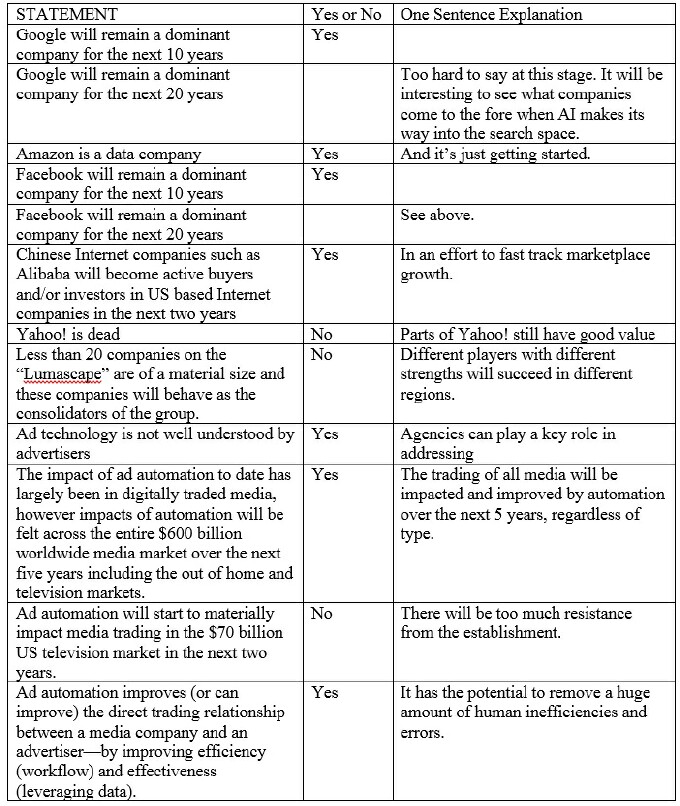Paul Dalton of DigitasLBi on Advertising Automation and Programmatic

Jay Sears, Senior Vice President Marketplace Development of Rubicon Project discusses advertising automation with Paul Dalton, Chief Media Officer, International of DigitasLBi as part of a series of buyer conversations on the topic.

(Pictured left to right: Jay Sears; Art Muldoon, CEO and Co-founder, Accordant Media; Oleg Korenfeld, Executive Vice President, Ad Tech and Platforms, Mediavest | Spark; Hossein Houssaini, Global Head of Programmatic Solutions, Havas Media Group; Mac Delaney, Head of Programmatic, Merkle, and Paul Dalton. Click on the links above to read Jay's interviews with other members of this group.)
JAY SEARS: What do you read to keep up with politics, art and culture?
PAUL DALTON: Twitter (morning wind up and nightly wind down), the BBC, Fast Company, Wired, Coolhunting, Hypebeast, The Economist and TechCrunch
SEARS: What do you read to keep up with friends?
DALTON: Facebook and Twitter. LinkedIn, increasingly.
SEARS: What do you read to keep up with the advertising technology industry?
DALTON: AdExchanger, ExchangeWire, The Drum, Product Hunt, Campaign, TechCrunch and Digiday. I also follow a long list of VCs, thought leaders and ad tech enthusiasts on Twitter.
SEARS: What’s your favorite commercial of all time?
DALTON: Blackcurrant Tango
SEARS: With regards to advertising automation, what are the three biggest trends you expect to impact companies in 2016 and 2017?
DALTON:
- Experimentation with machine learning
- Brand-specific media trading technologies
- Increased experimentation with dynamic creative
SEARS: With regards to advertising automation, what are the three most overblown topics that you wish would just go away?
DALTON:
- Custom segments. It’s all about the individual.
- Minimum viewability standards
- Brand vs DR. It’s not a war.
SEARS: Describe your company or division and then tell us the three most common issues with which you help clients with respect to advertising automation and programmatic trading.
DALTON: DigitasLBi is a modern, data-inspired agency. We are the only agency designed to offer clients who seek to transform their marketing to a complete stack of services, from integrated communications, to commerce to CRM and innovation services, across the world, all driven by our data about what really counts for your business.
Our global workforce of 6,000 includes industry-leading creatives in each region, working with data scientists, technology experts and media specialists to demonstrate what can be achieved when hard data meets imagination.
The three most common issues are:
- The gap in client understanding
- Implementation challenges due to complexities of integrating new technologies
- Linking exposure through to high-stake business goals such as sales (in both physical and digital channels
SEARS: Tell us about your company or division.
DALTON:

SEARS: The majority of ad technology companies have struggled (relatively small, unprofitable or both). Of the poor performers, what are the commonalities between them that have contributed to this weakness?
DALTON:
- Lack of USP in a crowded market
- Inventory challenges
- Poor client service
- No self-serve platform
SEARS: A smaller handful of ad technology companies has achieved scale and performed better than the rest. What are the commonalities between them that have contributed to this relative strength?
DALTON:
- Strong USP -- doing at least one vital thing better than anyone else
- Clearly articulated vision and growth plan
- Flexibility in deal structures (not one-size-fits-all)
- Investment in R&D -- continual development of new products and services
SEARS: Do we live in a “tale of two cities” where Google and Facebook win almost everything, advertisers are dictated to and other media companies fight for the scraps?
DALTON: No. Google and Facebook are powerhouses that clearly lead the marketplace in many critical areas of need. But there are areas that they do not. And there are marketing needs that others are better equipped to service.
SEARS: How can advertising automation help the strategy and planning functions (directly or indirectly) at an advertising agency?
DALTON: The richness of data-led intelligence that can be garnered from programmatic platforms is still largely undervalued and underutilized. It can be used to make previously hidden signals of human behavior both visible and actionable, which in the hands of a great strategist or plan, is gold.
SEARS: Transparency -- on media costs, on data, on inventory -- continues to be a lightning rod issue. Should transparency be a negotiated benefit for the advertiser client, yes or no?
DALTON: No. Without full transparency, an agency can’t expect to earn long-term client trust.
SEARS: Please answer the following statements yes or no.
DALTON:

SEARS: If you owned a yacht, what would you name it?
DALTON:Mr. Small
SEARS: A young family member has come to you seeking career advice. They must choose one of the following careers: ad agency executive, ad tech executive, company marketing executive or ice cream shop owner on the French Riviera. Which career path do you recommend and why?
DALTON: Ad tech executive. Technology and its application across every aspect of our lives will be transformative.
SEARS: What is your favorite restaurant in the world?
DALTON: Waffle House
SEARS: Thanks, Paul!
The opinions and points of view expressed in this commentary are exclusively the views of the author and do not necessarily represent the views of MediaVillage.com/MyersBizNet management or associated bloggers.


